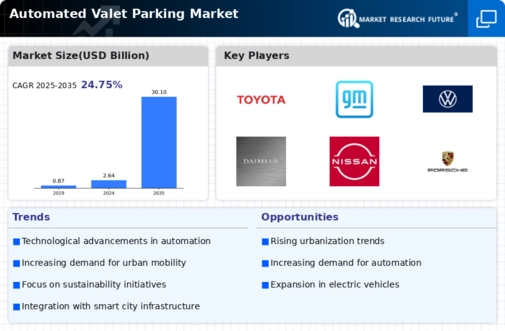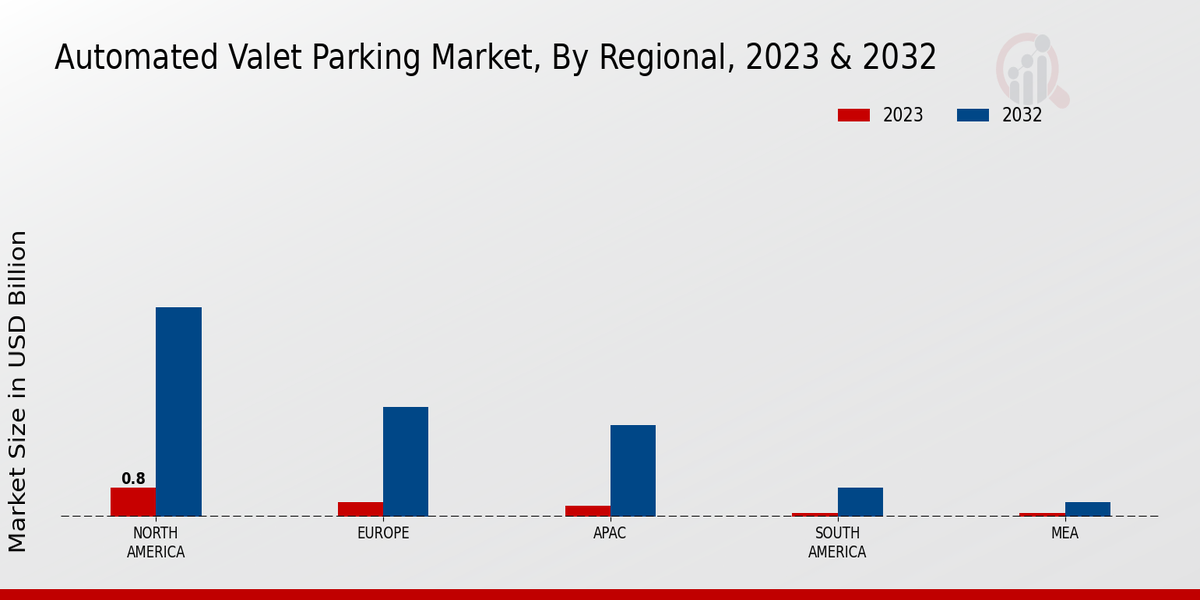Market Growth Projections
The Global Automated Valet Parking Market Industry is poised for remarkable growth, with projections indicating a substantial increase in market size. The market is expected to reach 2.64 USD Billion in 2024 and is forecasted to expand to 30.1 USD Billion by 2035. This growth trajectory suggests a compound annual growth rate of 24.75% from 2025 to 2035. Such projections highlight the increasing interest and investment in automated parking technologies, driven by urbanization, technological advancements, and changing consumer preferences. The anticipated growth underscores the potential for innovation and development within the industry.
Technological Advancements
The Global Automated Valet Parking Market Industry is experiencing rapid technological advancements that enhance vehicle automation and parking efficiency. Innovations in artificial intelligence, machine learning, and sensor technologies are driving the development of sophisticated parking systems. For instance, companies are integrating advanced algorithms that allow vehicles to navigate complex parking environments autonomously. This trend is likely to attract investments, as the market is projected to grow from 2.64 USD Billion in 2024 to 30.1 USD Billion by 2035, reflecting a compound annual growth rate of 24.75% from 2025 to 2035.
Consumer Demand for Convenience
Consumer demand for convenience is a pivotal factor driving the Global Automated Valet Parking Market Industry. As lifestyles become increasingly fast-paced, individuals seek solutions that save time and enhance their overall experience. Automated valet parking systems provide a seamless parking experience, allowing users to drop off their vehicles without the hassle of searching for parking spaces. This convenience is particularly appealing in busy urban centers and commercial areas. The growing preference for user-friendly technologies is likely to encourage the adoption of automated parking solutions, contributing to the market's expansion in the coming years.
Government Support and Regulations
Government support and favorable regulations are crucial drivers of the Global Automated Valet Parking Market Industry. Many governments are recognizing the potential benefits of automated parking systems in addressing urban mobility challenges. Initiatives such as funding for research and development, as well as the establishment of regulatory frameworks, are encouraging the deployment of these technologies. For example, some regions are piloting automated parking projects to evaluate their effectiveness in real-world scenarios. This proactive approach by governments is likely to foster innovation and accelerate the adoption of automated valet parking solutions across various markets.
Urbanization and Space Constraints
Urbanization is a significant driver of the Global Automated Valet Parking Market Industry, as cities face increasing space constraints. The growing population in urban areas necessitates efficient parking solutions to accommodate the rising number of vehicles. Automated valet parking systems offer a compact solution, maximizing parking space utilization while minimizing the need for extensive parking infrastructure. As cities evolve, the demand for such innovative solutions is expected to rise, further propelling the market's growth. The integration of automated parking systems into urban planning could potentially alleviate congestion and enhance the overall urban experience.
Environmental Sustainability Initiatives
The Global Automated Valet Parking Market Industry is also influenced by the increasing emphasis on environmental sustainability. Governments worldwide are implementing regulations aimed at reducing carbon emissions and promoting eco-friendly transportation solutions. Automated valet parking systems can contribute to these initiatives by optimizing vehicle flow and reducing idle times, thereby lowering emissions. Furthermore, the integration of electric vehicles with automated parking solutions aligns with global sustainability goals. As cities strive to create greener environments, the adoption of automated parking systems is likely to gain traction, supporting the transition towards sustainable urban mobility.













